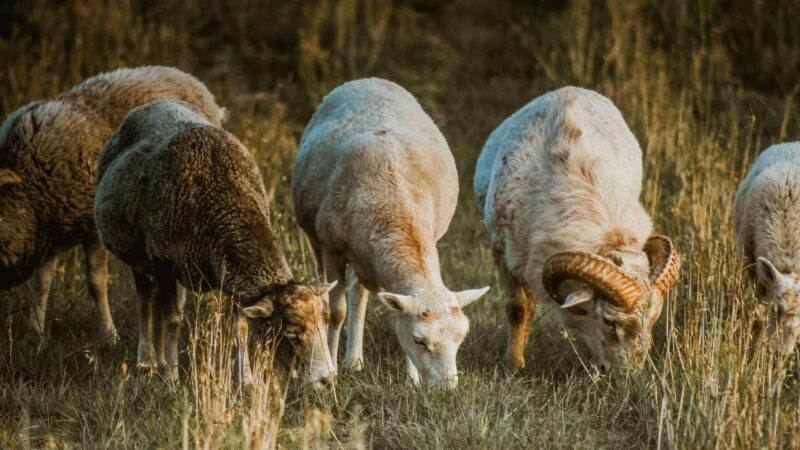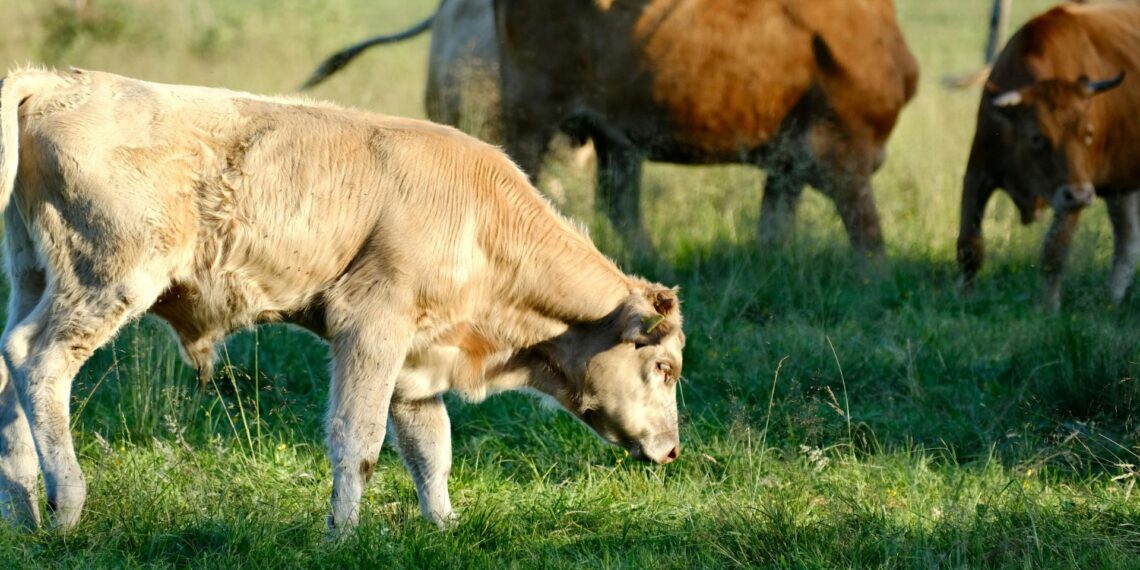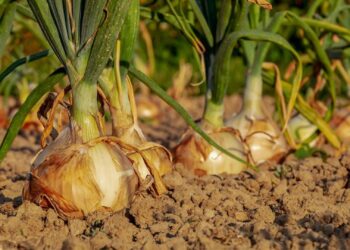For livestock farmers, the quality and availability of pasture can make or break a farming season. Healthy, well-established pastures provide the essential nutrients your animals need to thrive, increase productivity, and reduce the costs of supplementary feed. Establishing a pasture requires knowledge of soil, climate, species selection, and sustainable management practices.
Agricultural Research Council (ARC) researcher and pasture scientist, Patrick Rakau, shares practical, science-backed advice specifically for South African farmers. Effective pasture management not only ensures healthy and productive livestock but also maximises the economic returns of a farm.
Rakau outlines these economic benefits of well-established pastures:
- Reduced herbicide use: Well-managed pastures reduce the need for herbicides.
- High-quality pasture production: Produces high-quality pasture that can be sold or used for livestock feed.
- Improved livestock performance: Supports increased production in animals.
- Higher reproductive success: Improves kidding, lambing, and calving percentages.
Whether you are running a dairy operation, a beef farm, or a mixed livestock enterprise, understanding the steps to establish and maintain high-quality pastures is essential.
1. Assess environmental conditions
Before planting, it is crucial to assess the environmental conditions of your land, including factors such as temperature, rainfall patterns, and soil type, as these will directly influence the selection of pasture species or cultivars that are most suitable.
“If they don’t have this information, it can lead to the wrong selection of the species or cultivar that they want to farm with,” says Rakau.
Knowing your soil type, rainfall patterns, and temperature ranges will guide your choice of pasture species and cultivars.
Related stories
- Optimise your pastures: A guide to effective rotational grazing
- Sustainable grazing is key to livestock success
- A new breed of farmer: Mmadipilo blends Brahmans and tourism
2. Comply with legal requirements
Ensure your pasture establishment adheres to South African law, advises Rakau.
“Farmers need to follow the legislation. For the establishment of the pasture, one needs to comply with the CARA Act of 1983, which governs the utilisation of virgin soil. Before one can cultivate, you need to determine whether the site that you are going to cultivate is not a wetland or you are not bringing in invasive species.”
This protects both natural resources and your investment in the pasture.
3. Know your soil and its importance
Healthy soil is critical for pasture success. Farmers must understand their soil type and local rainfall patterns, because planting a cultivar unsuited to the soil can lead to failure.
Rakau notes that seeds are costly, and if conditions are unsuitable, germination may not occur, resulting in the pasture not developing as expected. He advises farmers to invest time in soil testing to avoid costly mistakes.

4. Prepare the seedbed
Proper seedbed preparation is essential for germination and growth. “The first step is to cultivate your soil to make sure that the seedbed is weed-free, because weeds will jeopardise or affect the quality of your forage,” Rakau explains.
Farmers should prepare the seedbed using a tractor, starting with a disc plough, followed by a reaper, and then rolling the soil to create a firm surface. This ensures the seeds are not buried too deeply, allowing them to germinate quickly and emerge before weeds can establish. Rakau notes that a well-prepared seedbed ensures optimal germination and reduces competition from weeds.
5. Source certified quality seeds
Using certified seeds guarantees better performance. “There are certified companies that are regulated by Sansor in the country. We talk about certified seed because those seeds were tested and coated, and the germination percentage is even given. I advise farmers to buy certified seeds from the accredited seed companies,” Rakau says.
Before release, every forage cultivar is evaluated and tested by the seed company, and the results are made publicly available. Using certified seeds lowers risk and helps ensure consistent and reliable pasture growth.
6. Choose grass species based on livestock needs
Select species according to your farm’s objectives. For dairy farming, Rakau notes that farmers should focus on high-quality, carbohydrate-rich grasses that perform well under irrigation.
For beef farming, natural pastures such as Cenchrus ciliaris, Trichloris crinita, and Smuts finger grass (Digitaria eriantha) are suitable, offering high-protein content while requiring less intensive management.
Different grasses suit different livestock types and production goals.
Related stories
- Why bull performance testing is key to herd success
- Limpopo’s ‘soil boy’ finds calling in crops, cattle, and community
- Foot-and-mouth disease: What farmers need to know
7. Consider timing and rainfall patterns
Planting at the right time ensures success.
In South Africa, there are effectively two main seasons for planting: summer and winter. In summer rainfall areas, the best time to plant is between October and November, with December being the latest option.
In winter rainfall regions, such as the Western Cape and coastal areas, March is ideal for planting. Planting too early, for example, in September, can result in poor germination if there is insufficient soil moisture.
“To minimise losses, you must have enough moisture in the soil so that the seeds can germinate,” Rakau says.
8. Protect soil moisture with cover crops
Soil cover preserves moisture and improves health.
“We are trying to conserve that moisture through cover cropping. After the farmers have harvested their cash crop, then they must not leave their soil naked before establishing pasture because once you leave your soil naked, the moisture evaporates. Covering the soil helps retain moisture, much like a hat or sunscreen protects a person from the sun,” Rakau explains.
Using cover crops also prevents soil degradation and improves fertility for future plantings.
9. Manage pests, diseases, and weeds naturally
Rakau recommends natural methods to reduce chemical use. A key method being promoted to farmers is mixed cropping. Continuously planting the same crop, such as maize, can build up diseases in the soil. Introducing a cover crop in between, comprising a mix of broadleaf plants, legumes, and grasses, breaks the cycle of pests and diseases naturally.
This approach, he explains, allows farmers to specialise in a particular pasture species while gaining expertise in what performs best and meets market demands. Mixed cropping and cover crops disrupt pest and disease cycles while improving soil and pasture health.
10. Determine when pastures are ready to graze
Determining when a pasture is ready for grazing depends on the species, but generally, it takes about two months for the roots to fully establish in the soil. This ensures the turf is strong enough to withstand the pressure from grazing animals.
Rakau explains that if grazing occurs too early, while the grass is still young and not fully developed, the plants can be uprooted, resulting in loss. After the first grazing, it’s important to follow rest periods and consider the specific growth stages of each species to guide subsequent grazing.
“You can [also] use a 30 cm ruler to determine if the grass is ready for grazing. That is the optimum grazing height that is required.”
Management tips
Implement rotational grazing.
Rakau recommends rotational grazing in different camps. “When you see that they have grazed up to 10 cm above the ground, then you can change them to another camp. In that way, you will maintain your pastures for a longer time without harming them.”
He notes that for communal farmers, rotational grazing can be challenging due to shared grazing land and the lack of established camps. ARC projects are actively working to train farmers in implementing small-scale rotational systems.
Common mistakes to avoid
Rakau identifies three main mistakes that farmers often make that should be avoided to establish successful pastures:
Not understanding soil:
“Farmers don’t know their soils, simple soil science 101. Sandy soil cannot hold water. It will help you to know the species that you must work with.”
Incorrect planting date:
“You’ll find a farmer buying a summer crop and plant it in winter. Even if it does germinate, with lower temperatures it won’t grow well.”
Poor grazing management:
“They don’t understand the grazing systems or grazing management.”
READ NEXT: Growing onions: Tips for a successful harvest


















